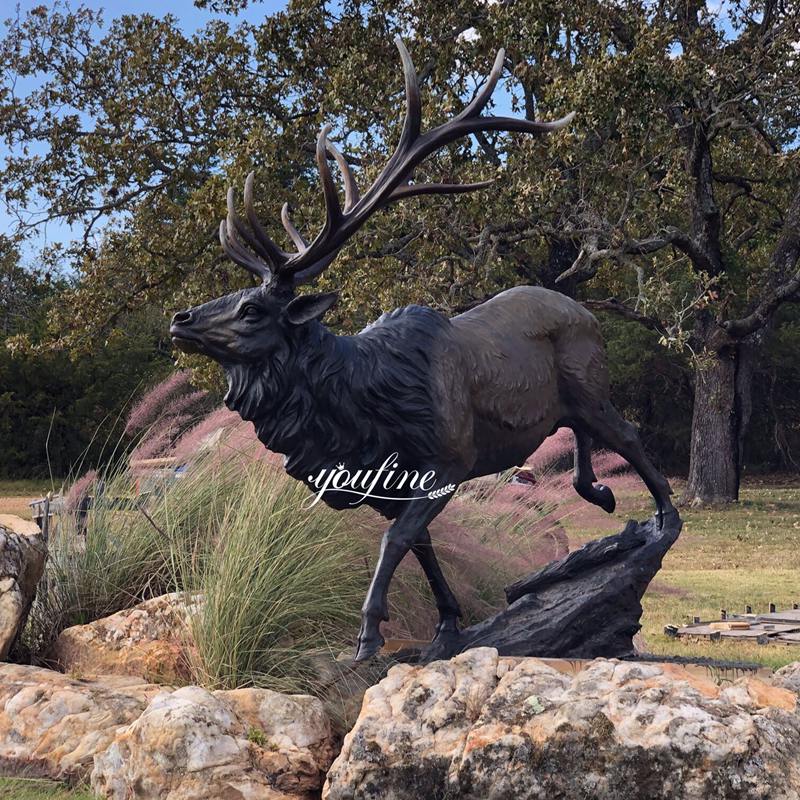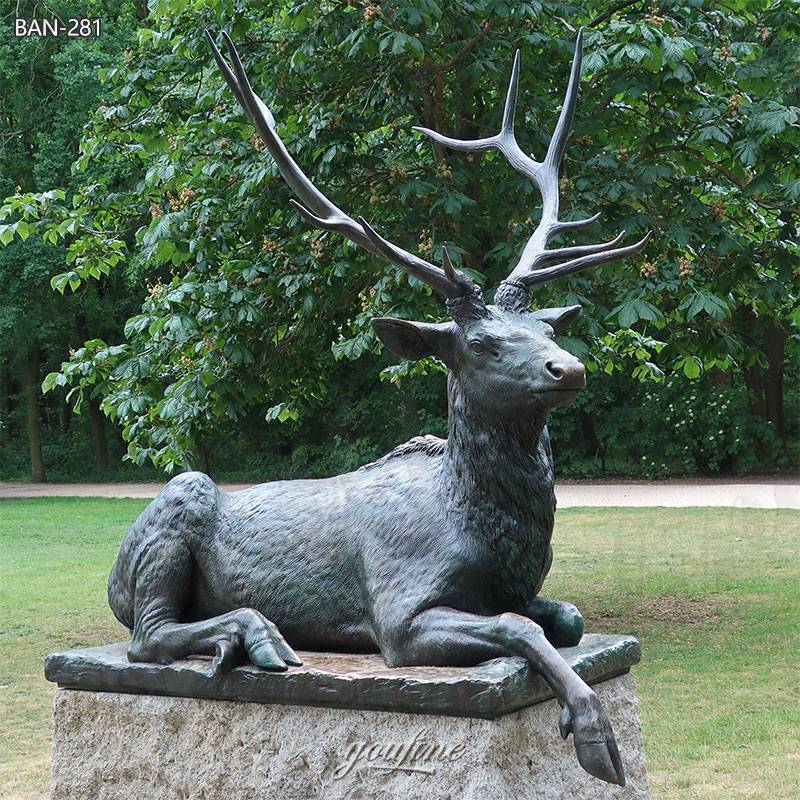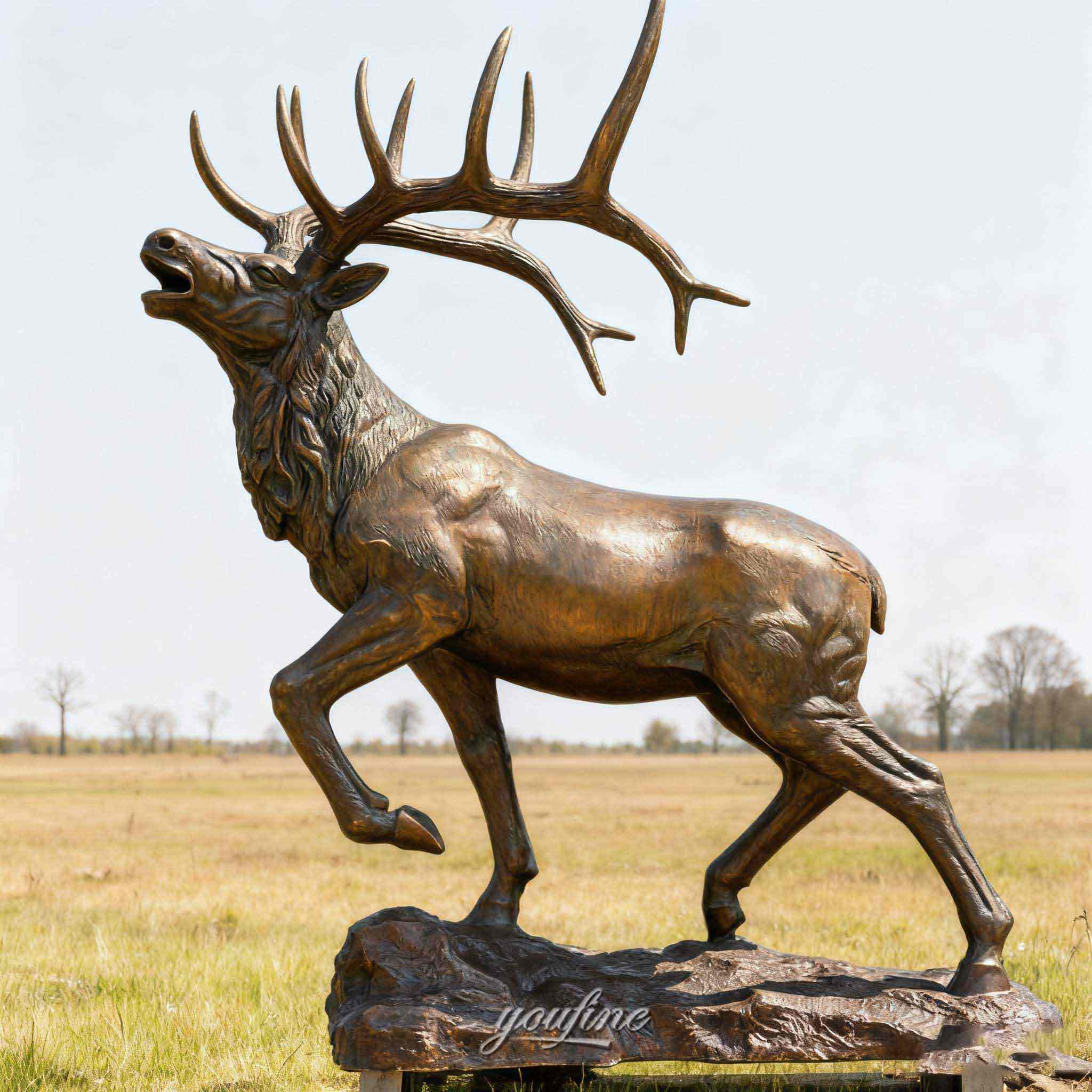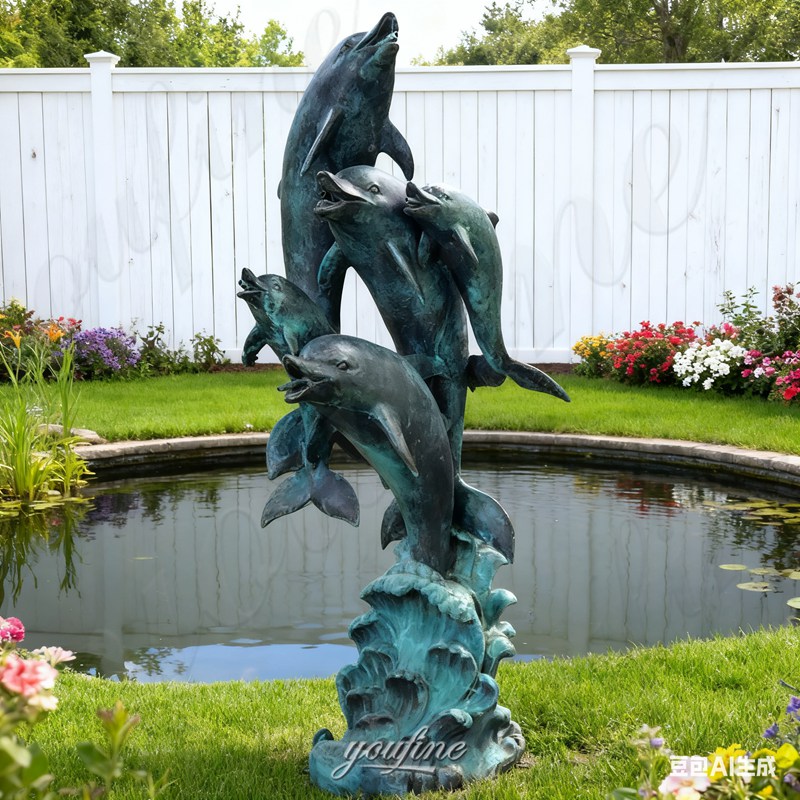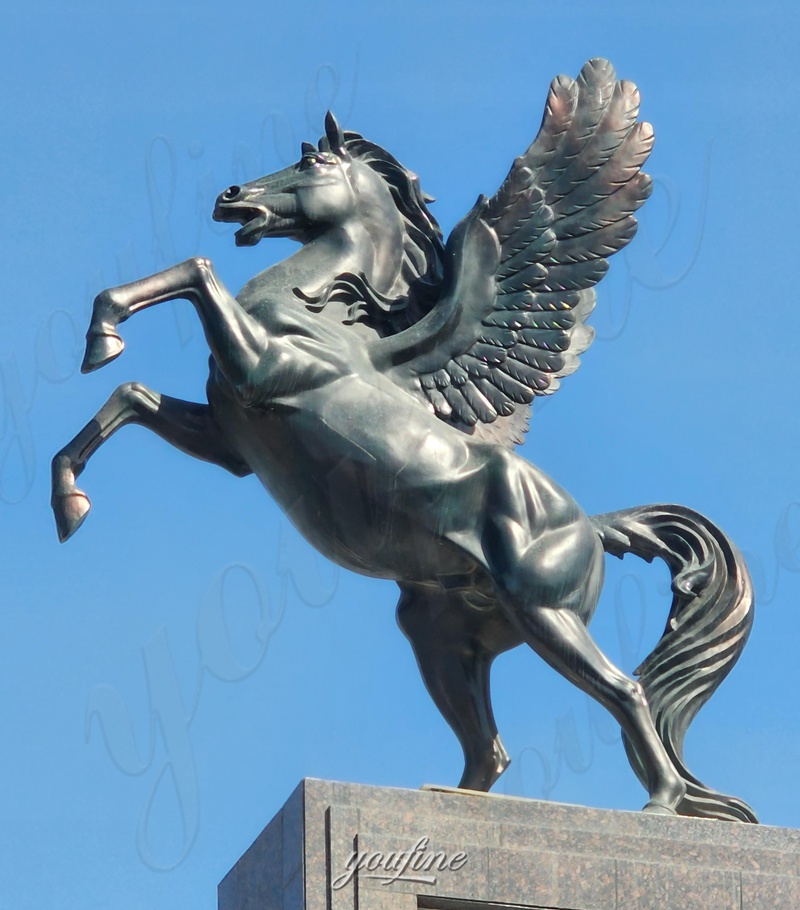In the long river of history, there are countless symbols and totems that transcend the boundaries of time and space, quietly telling the glory and wisdom of the past. Among them, the bronze lion statue, with its majestic posture and deep eyes, has become a bridge connecting different cultures and times.
They are not only a symbol of wild power, but also the crystallization of human wisdom and emotion. Today, let us unveil the mystery of the bronze lion statue and explore the rich meaning and far-reaching influence behind it.
From the patron saint of ancient emperors to the source of inspiration in modern art, how do these immortal sculptures transcend thousands of years of wind and frost and still shine in our lives? Let us embark on this journey full of discovery and perception together.
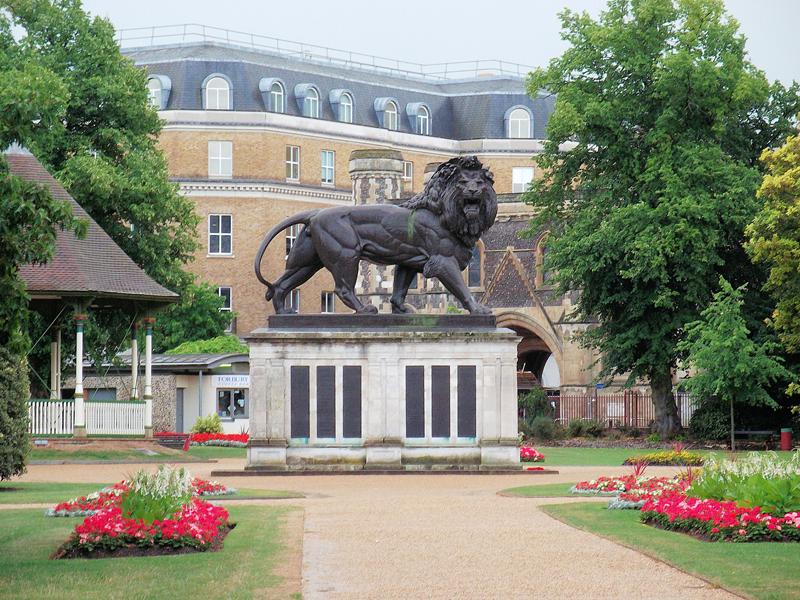
The Meanings of Bronze Lion Statue
Rich in symbolism, bronze lion statues are one of the most enduring and iconic representations in art, sculpture, and architecture. Over time, the lion has been revered in various cultures as a symbol of strength, courage, protection, and royalty. Statues crafted from bronze not only evoke these meanings, but also convey additional significance because of the durability, timelessness, and noble qualities of the material.
1.Strength and Power
The lion has long been known as the “king of the jungle” for its physical strength and dominance. The image of the lion is often used in sculpture, especially bronze sculpture, to represent unparalleled strength and dominance. Whether placed in a public place, home or institution, bronze lion statues represent strength and resilience.
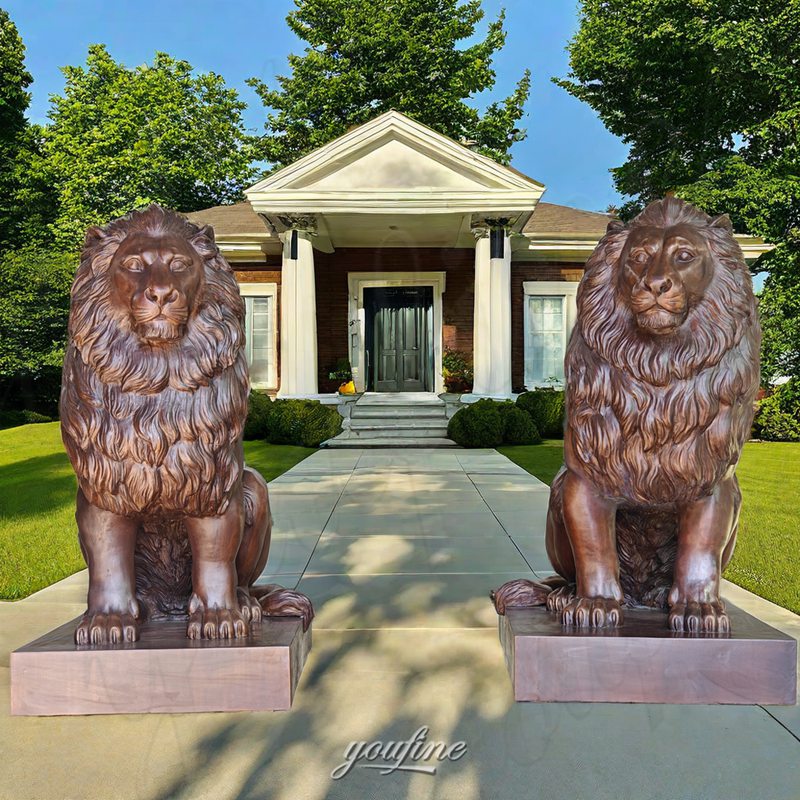
2.Courage and Bravery
The lion is a universal symbol of courage and bravery, qualities revered by people, both human and animal. Lion sculptures, especially those depicted in action or roaring, reflect the animal’s fearless nature.
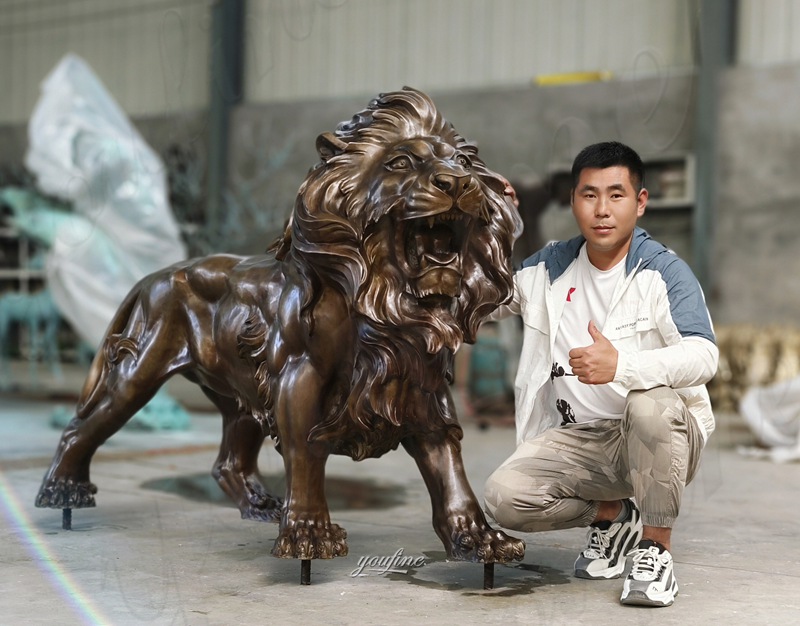
3.Protection and Guardianship
In many cultures, lions are depicted as protectors, guardians of sacred spaces, and defenders of the weak. This symbolism is reflected in the use of bronze lion statues at gates, entrances, and temples. These statues are believed to repel evil spirits and negative energy. For example, in Chinese culture, lions (often called Fushi or Fu Dogs) are placed at the entrances of homes, palaces, or businesses to provide protection and ensure prosperity.
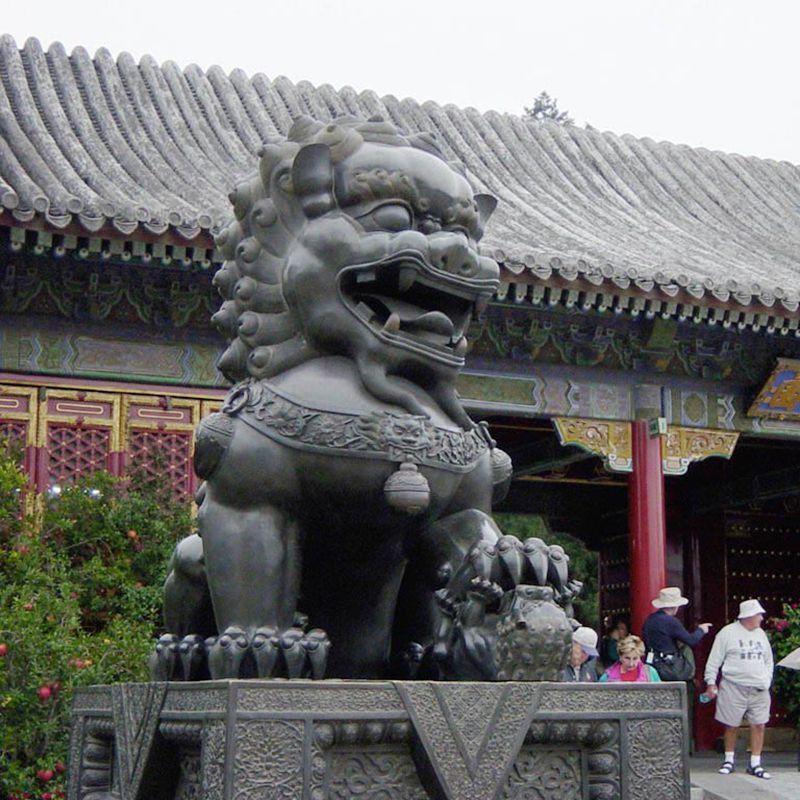
4.Royalty and Nobility
Lions have long been associated with royalty, nobility, and leadership. The use of bronze, a material traditionally associated with wealth and the upper class, further reinforced the association between lions and leadership. Bronze lion statues were often found in palaces, government buildings, or monuments to kings, emperors, and heroes, symbolizing their authority and status.
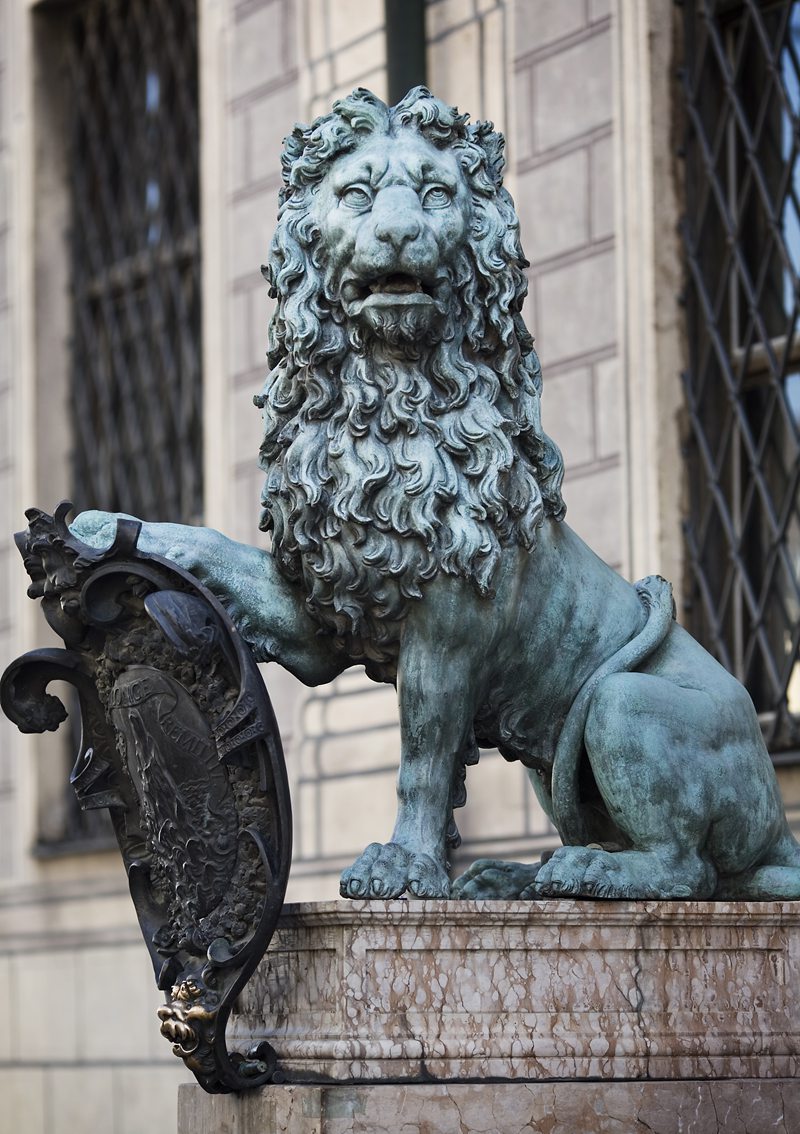
5.Majesty and Beauty
Lions, especially in their noble stance, convey a sense of majesty and beauty. The lion’s graceful posture and flowing mane are often highlighted in bronze sculptures, emphasizing not only the animal’s strength but also its graceful, almost mythical presence.

6.Wisdom and Leadership
In many cultures, lions are associated with wisdom and just leadership. Their role as rulers of the animal kingdom often extends to symbols of wise, just leaders in human culture. For example, in Hindu mythology, lions are associated with the Narasimha avatar of the god Vishnu, who embodies wisdom and just protection.
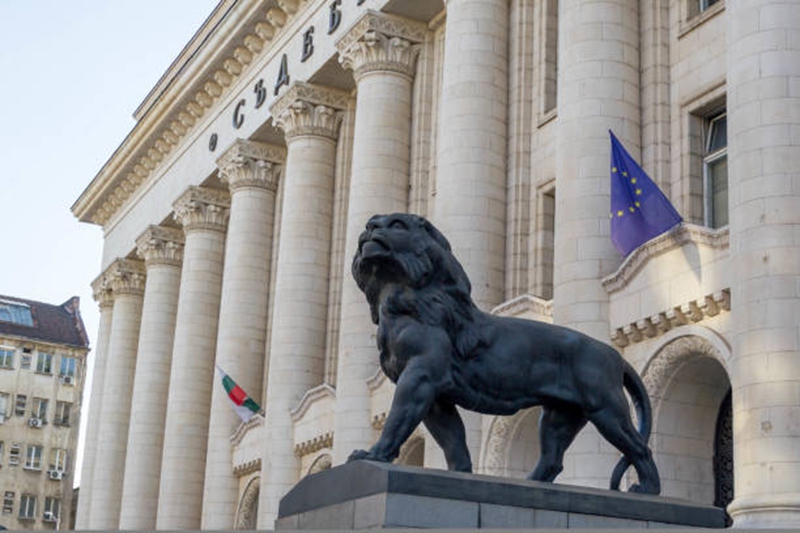
7.Fame and Glory
Lions are often seen as creatures that embody fame, glory, and greatness, representing those who have achieved extraordinary things. This is why bronze lion statues are often found in honor of famous people or in commemorations of military victories and public achievements.
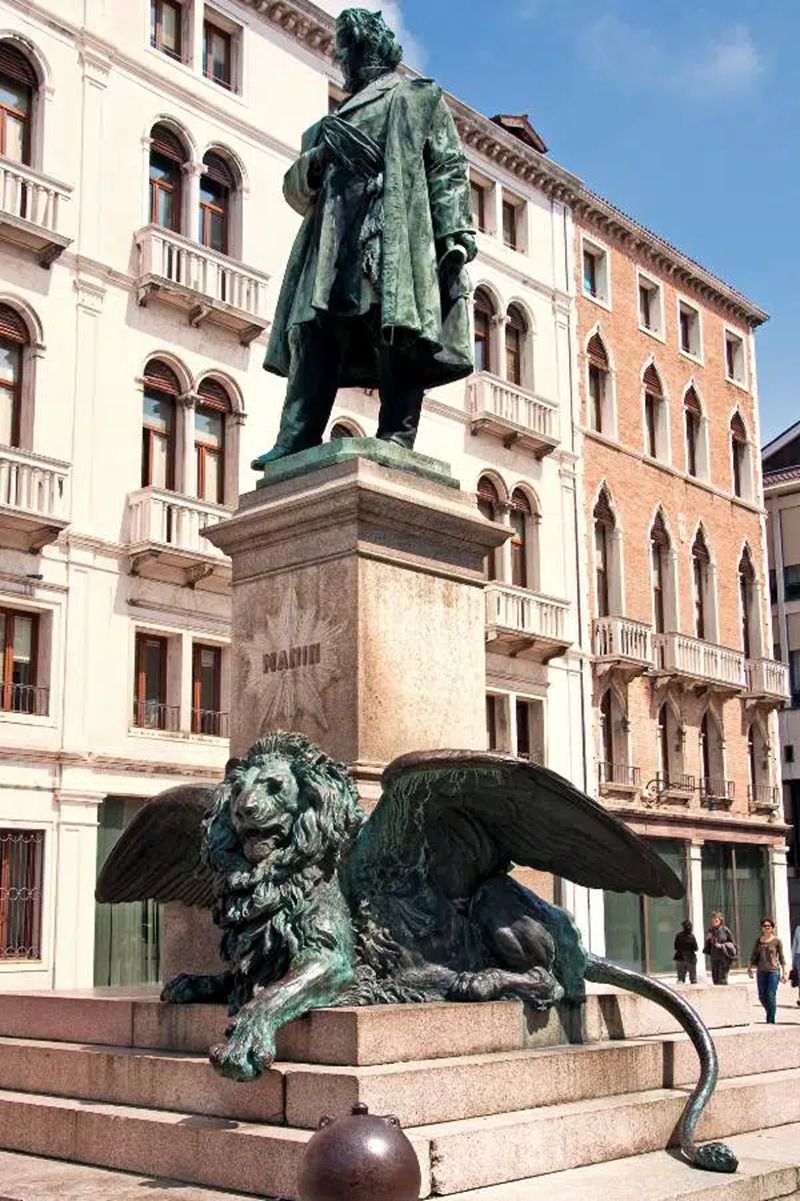
8.Victory and Triumph
Bronze lion statues often symbolize victory over adversity. Whether standing on a pedestal or balancing in a roar, the image of a lion evokes a sense of overcoming challenges. Lions are often used in monuments and statues commemorating military victories, battles, and national triumphs.
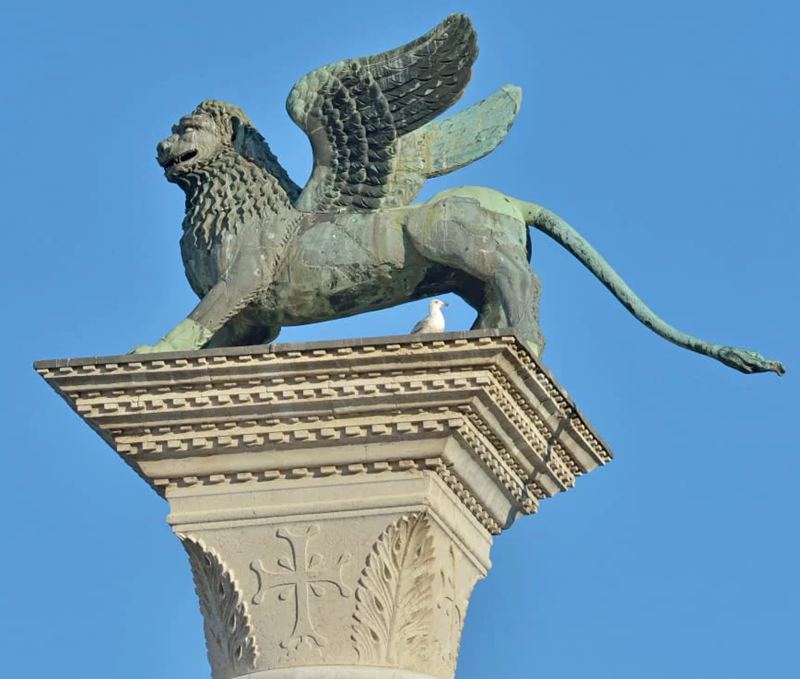
9.Symbolism of the Sun
In some cultures, lions are also associated with the sun, symbolizing brightness, vitality, and rebirth. The lion’s golden mane can resemble the rays of the sun, and its connection to the celestial body adds another layer of meaning.
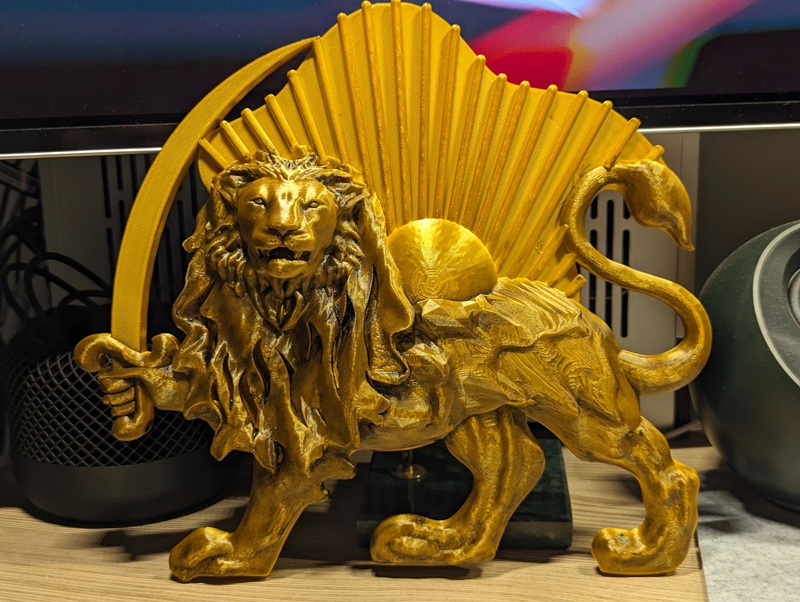
10.Spiritual Significance
In religious and spiritual contexts, lions represent divine power and authority. For example, in Christian imagery, lions symbolize the power of Christ and his victory over sin and death. In Buddhism, lions are considered the guardians of the Dharma and are symbols of the Buddha’s power and wisdom. Therefore, bronze lion statues can also carry spiritual connotations, representing divine protection or spiritual power.
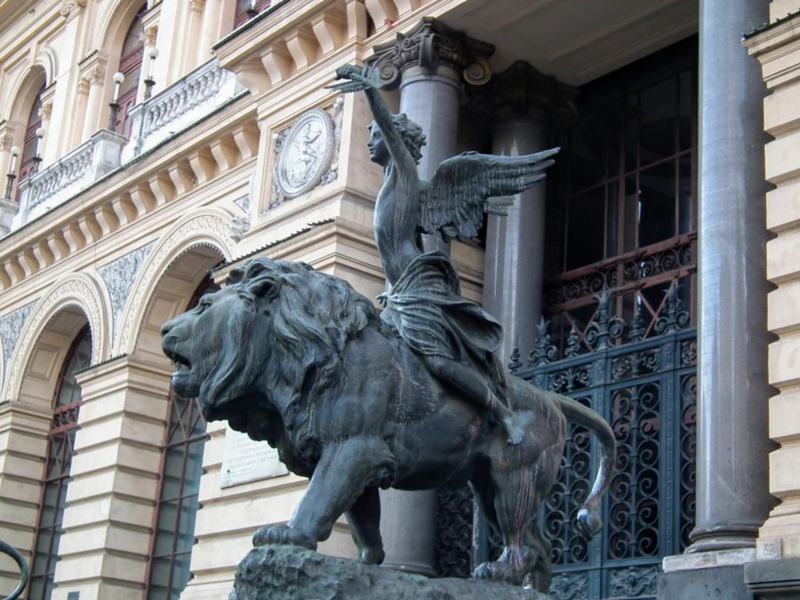
The Past and Present of Lions Sculpture
Ancient Civilizations
1.Mesopotamia (c. 2300 B.C.)
The earliest lion sculptures were created by the ancient civilization of Mesopotamia. One of the earliest examples of bronze lion sculptures is found in reliefs and statues that adorned temples and royal palaces. The Ishtar Gate of Babylon (c. 575 B.C.), decorated with large glazed lions, is a notable example of the symbolism of lions in the ancient world.
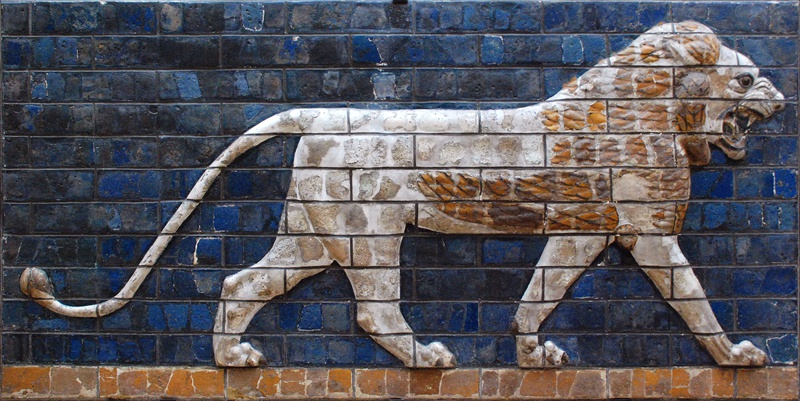
2.Ancient Egypt (c. 1500 B.C.)
The Egyptians created lion statues to symbolize strength and protection. These sculptures often appeared in front of temples and tombs, where it was believed that the lions guarded the sacred space. Ancient Egyptian bronze lions were often small and well-made to show the majesty of the creature.
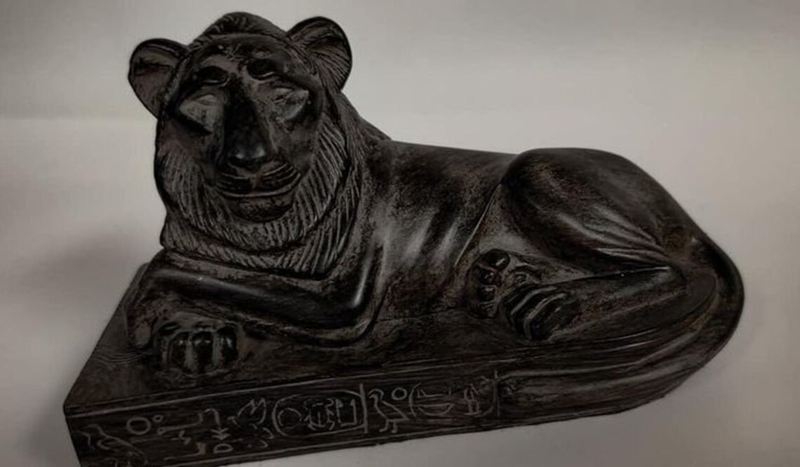
3.Ancient Greece (c. 5th century BC)
The Greeks viewed lions as symbols of nobility and heroism, often incorporating them into art and mythology. In Greek art, bronze lions were sometimes made for use in public places, including temples and city gates. The Lion of Amphipolis (c. 4th century BC) is one of the famous examples from this period, and although it was not made of bronze, it highlights the prominence of the lion in Greek culture.
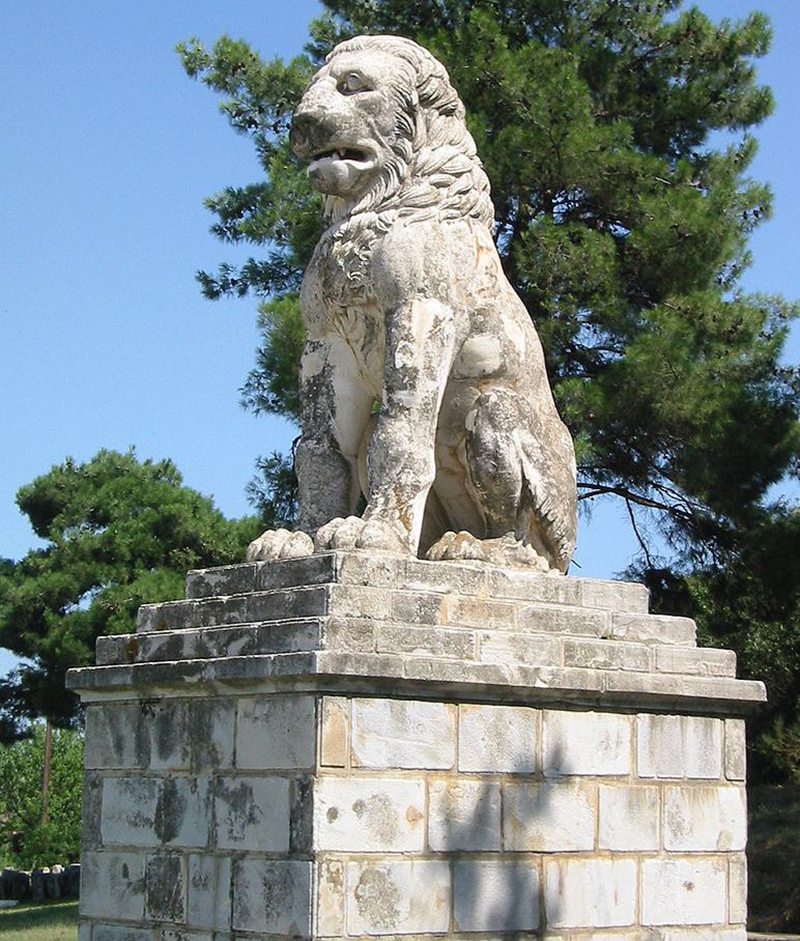
4.Ancient Rome (c. 1st century BC – c. 5th century AD)
The Romans also made bronze lion sculptures, using them as symbols of power and authority. These sculptures were often displayed in public places, such as forums and baths, and their majesty symbolized the power of the Roman Empire. The Lion of the Capitoline Museums is a famous bronze sculpture and an important Roman work.
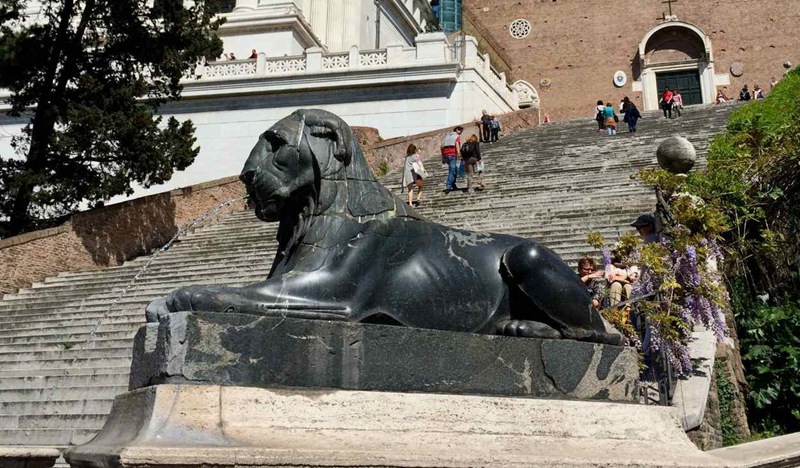
Medieval and Renaissance Periods
1.Medieval Europe (5th to 15th century AD)
Lions continued to appear in European sculpture, especially in coats of arms and royal emblems, symbolizing courage, royalty, and nobility. However, the production of large bronze lion sculptures dwindled during the Medieval period as other materials such as stone became more popular.
2.Renaissance Period (14th to 17th century AD)
During the Renaissance, the revival of classical ideals revived interest in lion sculpture. Bronze casting techniques improved, allowing for more detailed and realistic lion sculptures. Artists such as Donatello and Giambologna created bronze lion sculptures, often to symbolize strength and kingship.
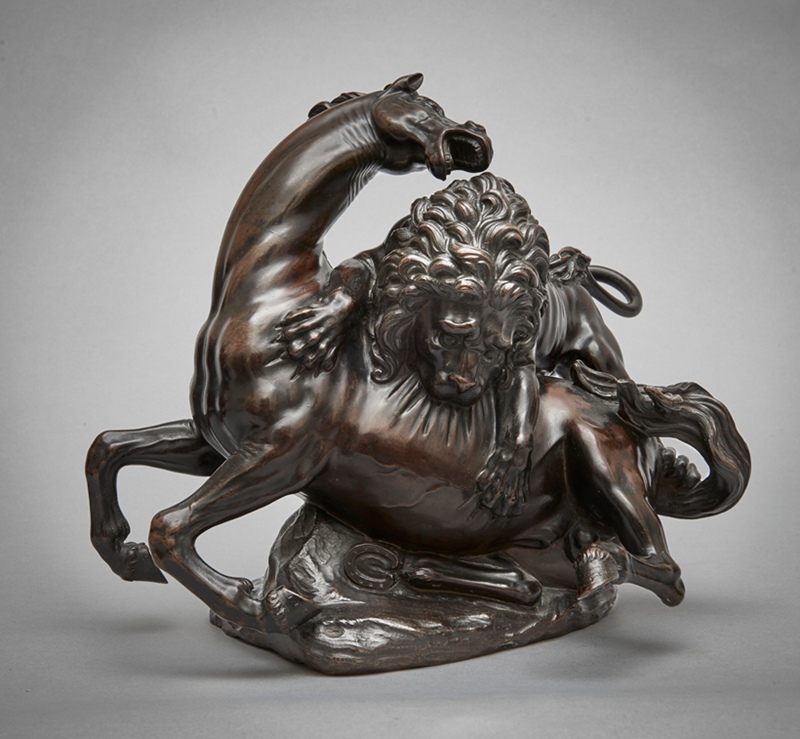
Modern
In modern times, bronze lion sculptures continue to be created, drawing on the craft traditions of antiquity and the Renaissance. They are often used as decorative statues, public monuments and memorials. Some of the most famous modern bronze lion sculptures include: the lion of Trafalgar Square in London (1840s), designed by Sir Edwin Landseer and the bronze lion statue of the New York Public Library, symbolizing knowledge and power.
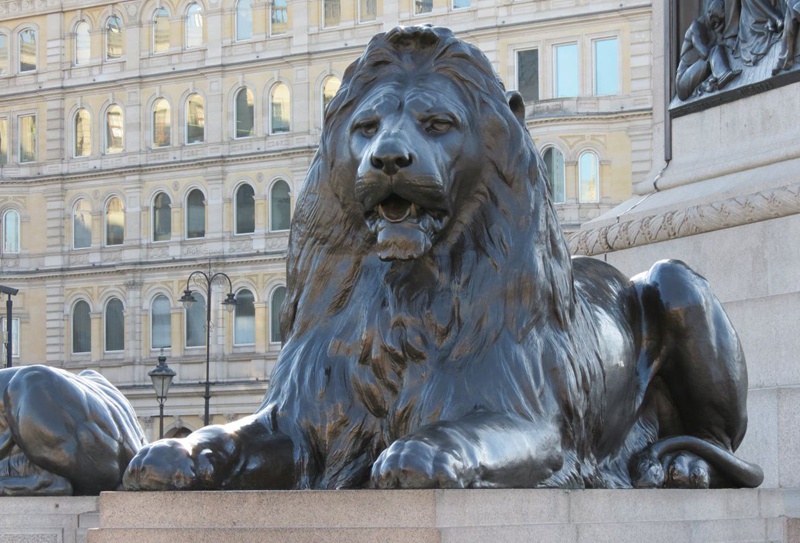
The Different Styles of Bronze Lions
1.Bronze Sitting Lion Statue
This type of lion statue is usually shown sitting with a steady body, strong limbs, and a majestic and calm facial expression, showing a solemn guardian posture.
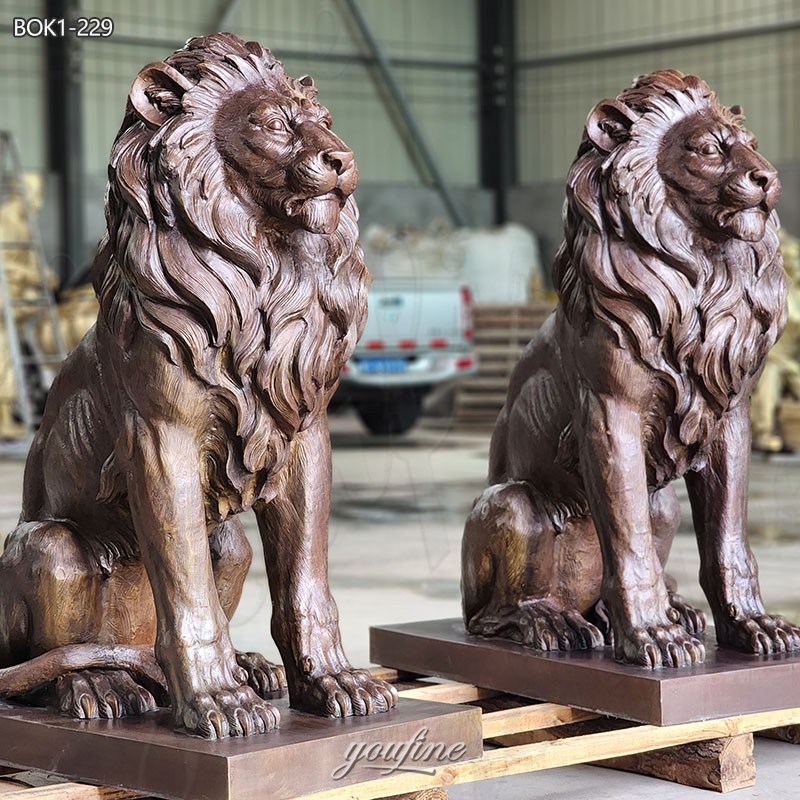
2.Bronze Standing Lion Statue
The lion statue is standing upright, with its front legs erect, hind legs slightly bent, head held high and eyes sharp, showing strength and majesty.
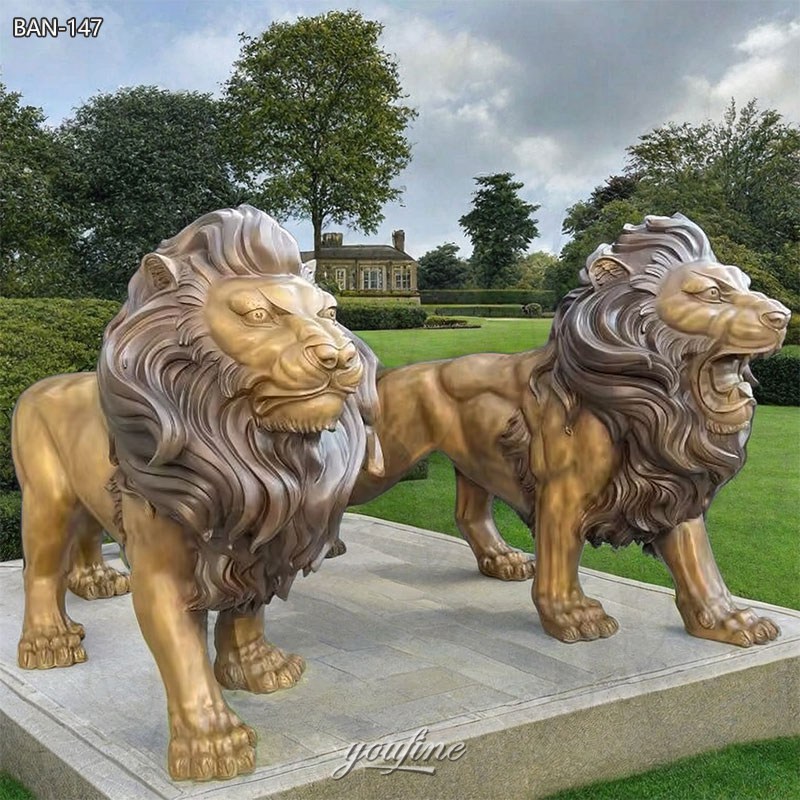
3.Bronze Lying Lion Statue
The lying lion statue has a leisurely posture, a stretched body, naturally placed limbs, and a gentle facial expression, revealing a sense of tranquility and serenity.
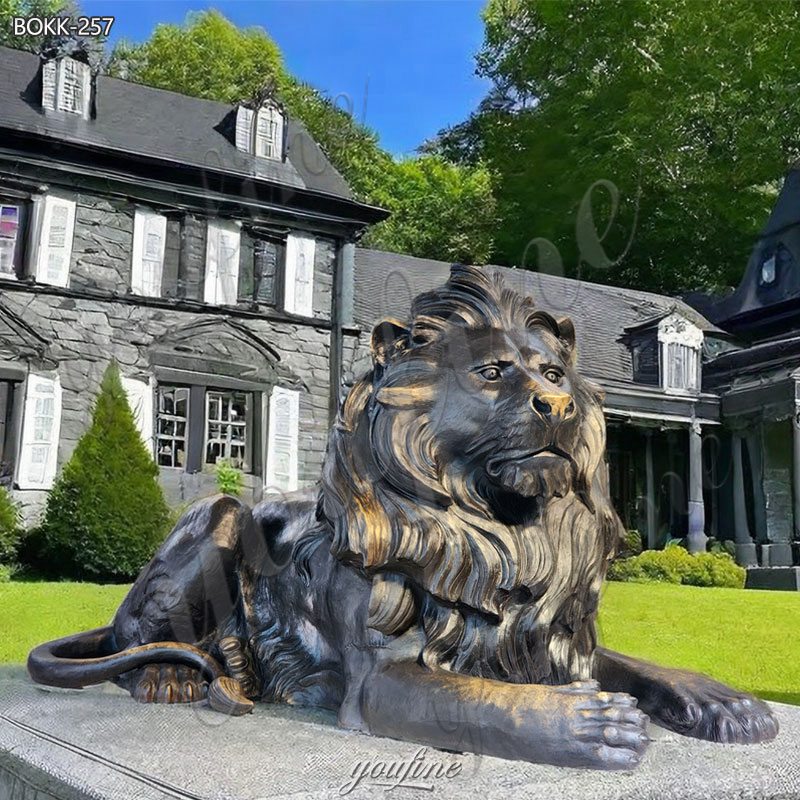
4.Bronze Roaring Lion Statue
The roaring lion statue has its mouth wide open, revealing sharp teeth, its eyes full of anger and power, and its whole body seems to be shaking, showing amazing momentum and majesty.
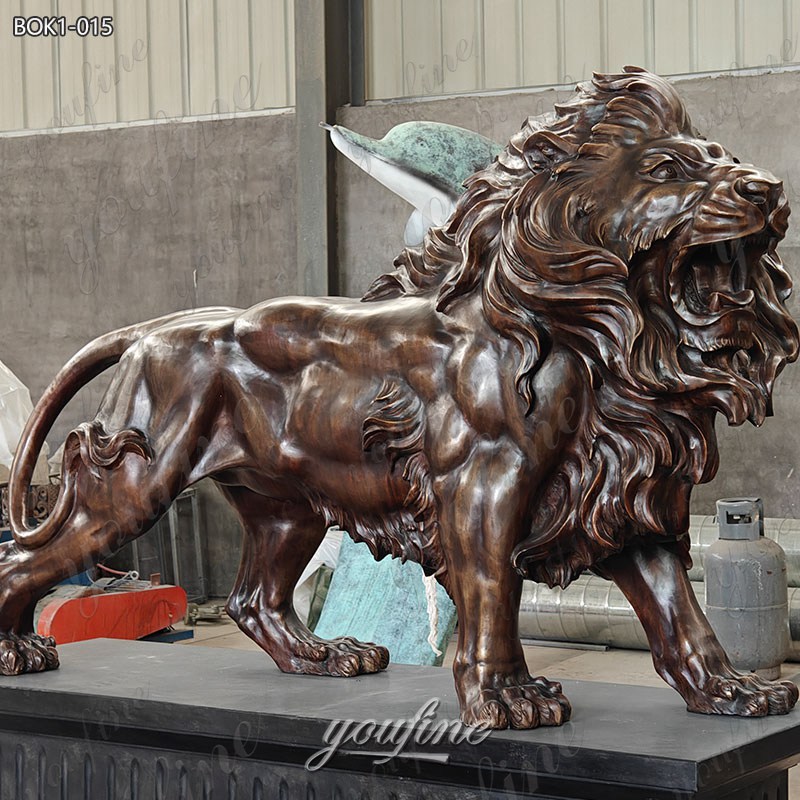
5.Bronze Winged Lion Statue
The winged lion statue combines the power of a lion and the flying ability of a bird. The image is unique and mysterious, with its wings spread out, as if ready to take off at any time, full of fantasy.
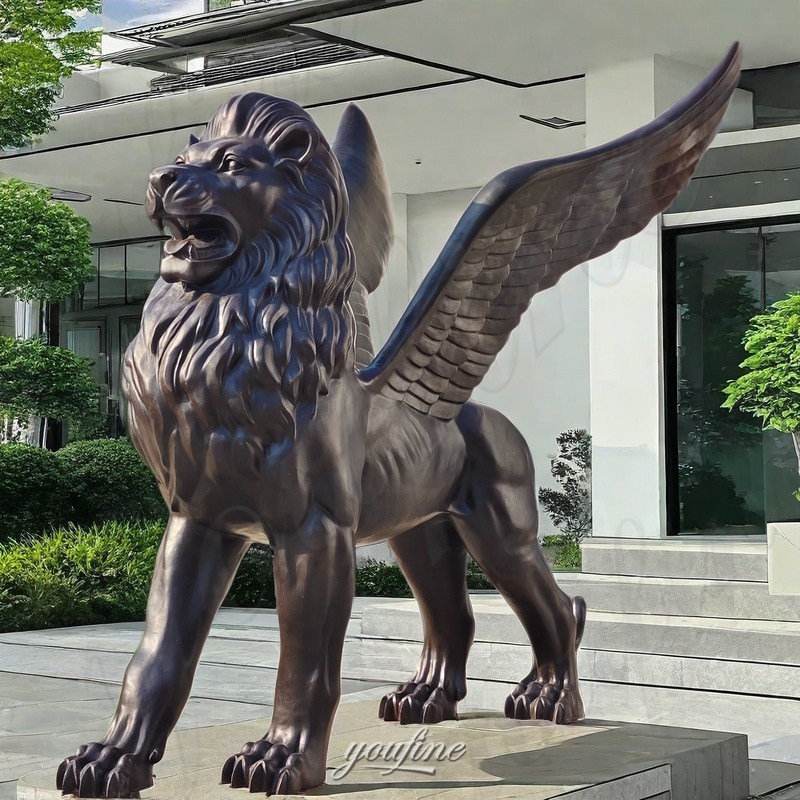
6.Bronze Sleeping Lion Statue
The sleeping lion statue has a curled up body, relaxed limbs, slightly tilted head and a calm facial expression, showing an atmosphere of tranquility and serenity, implying strength and wisdom ready to be unleashed during rest.
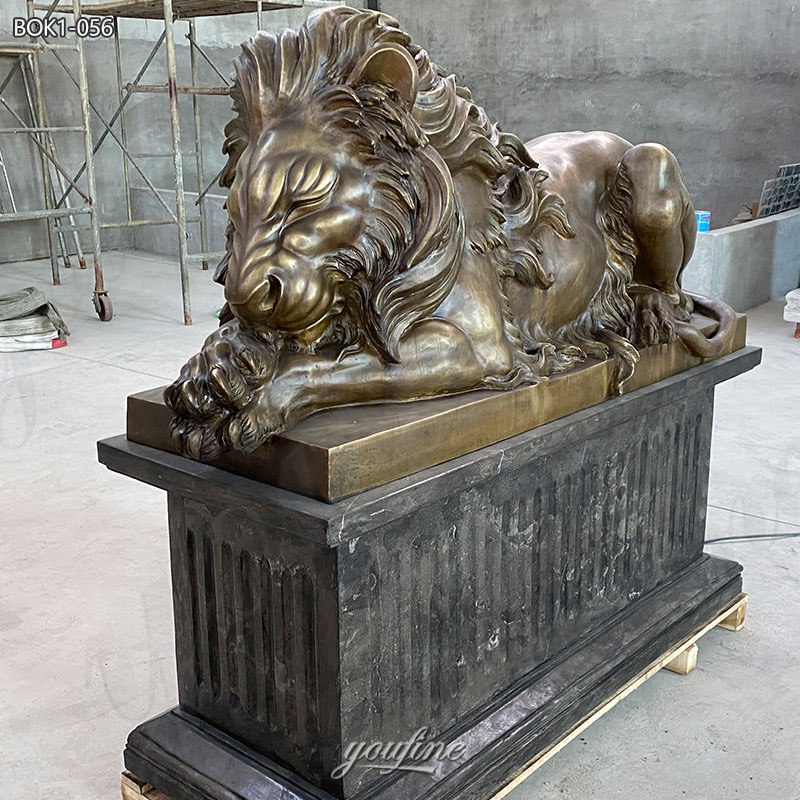
7.Bronze Lion with Ball
This style of bronze lion usually has a ball placed at its feet or beside it. Sometimes the ball is carved as a part of the lion’s body, and sometimes it exists independently. The presence of the ball increases the three-dimensional and dynamic sense of the sculpture, and also implies that the lion has the ability to control the overall situation and destiny.
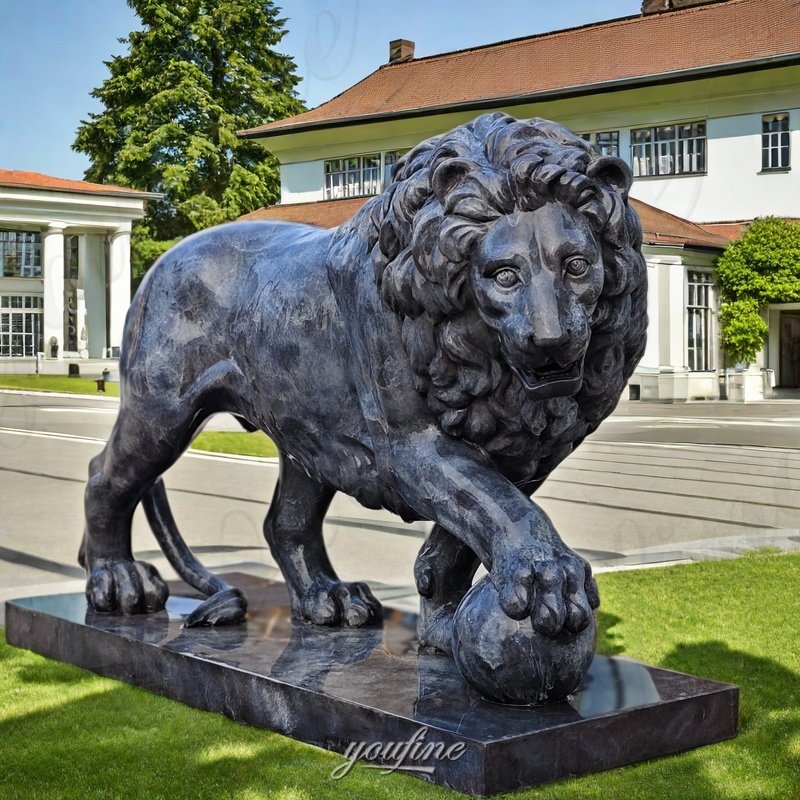
8.Bronze Lion Bust
The lion bust only carves the lion’s head and upper body. The facial expression is vivid and the eyes are sharp, showing the lion’s majesty and power, while highlighting the facial details and expressions.
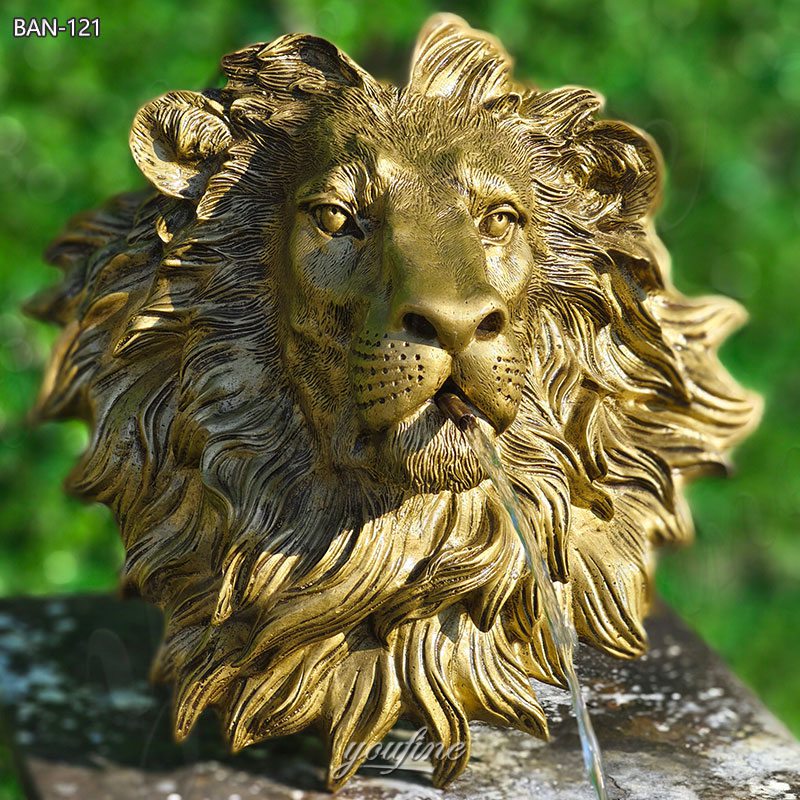
9.Bronze Griffin Statue
The Griffin statue combines the body of a lion with the head and wings of an eagle. Its image is majestic and mysterious, with spread wings and sharp eyes, symbolizing the combination of strength and wisdom.
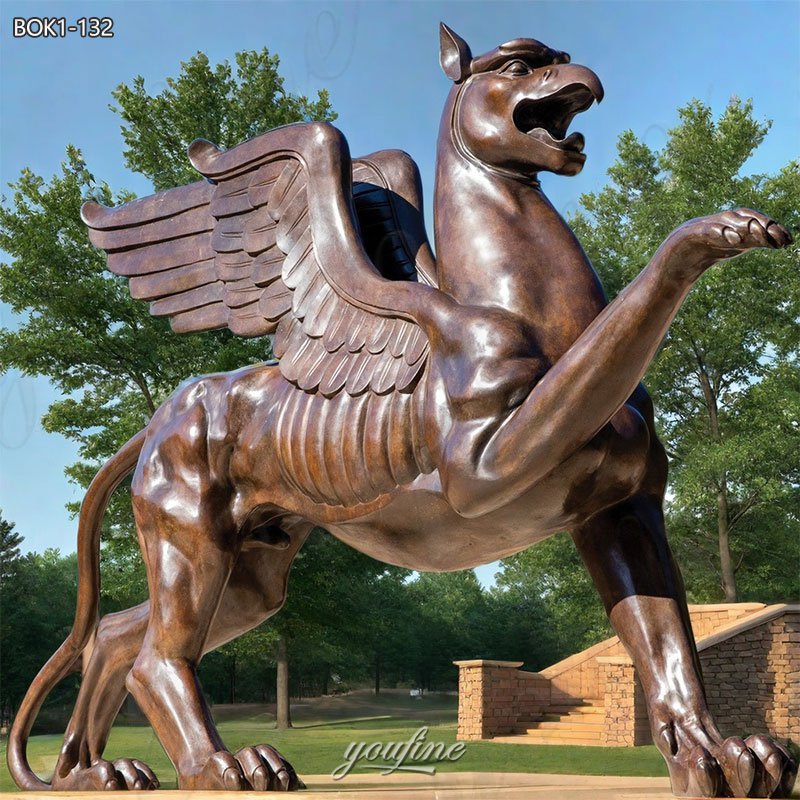
The Placement of the Bronze Lions
The placement of a bronze lion statue can have a profound effect on the ambiance of a space, both enhancing its beauty and increasing its symbolic meaning. Since lions symbolize strength, courage, and protection, the placement of these statues in both indoor and outdoor decorations is carefully considered to maximize their decorative effect and significance. The following is a guide to the ideal placement of bronze lion statues:
1.Entrances and Gates (symbolizing protection)
Lions at entrances convey a sense of nobility and majesty, setting a solemn tone for what lies beyond. The lion’s posture—whether seated, standing, or in a more dynamic pose—adds a welcoming yet majestic atmosphere.
For businesses, public institutions, or private homes, lions give an impression of authority, boldly stating the status and importance of a space.
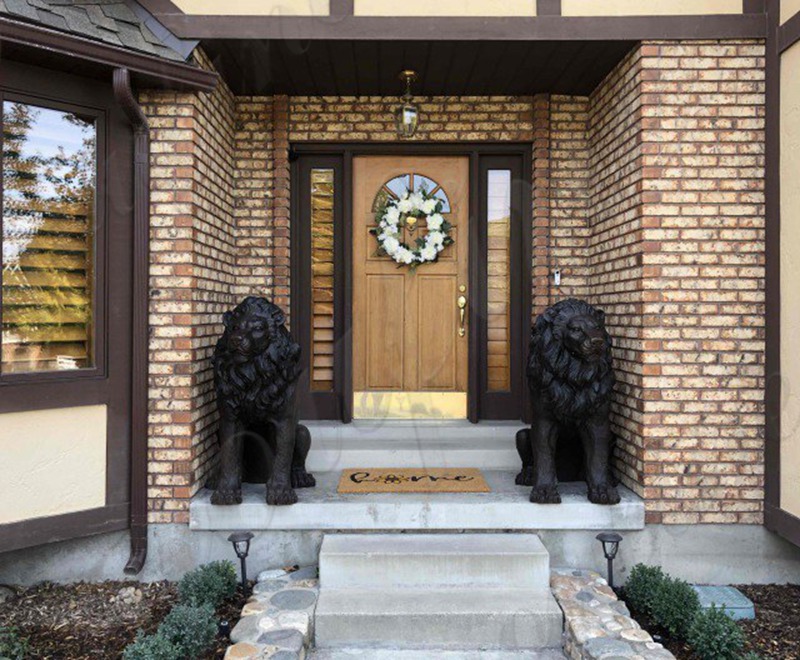
2.In Gardens and Outdoor Spaces (Symbolizing Strength and Beauty)
Create an atmosphere of opulence and grandeur. The majestic form of a lion, especially a bronze lion, can blend beautifully with the natural elements of a garden or outdoor space.
In a garden or around a house, bronze lions guard the space, providing symbolic protection while enhancing the tranquility and peace of the environment.
Large bronze lion statues in the garden create an atmosphere of luxury and sophistication, especially when paired with lush greenery or classical landscaping.
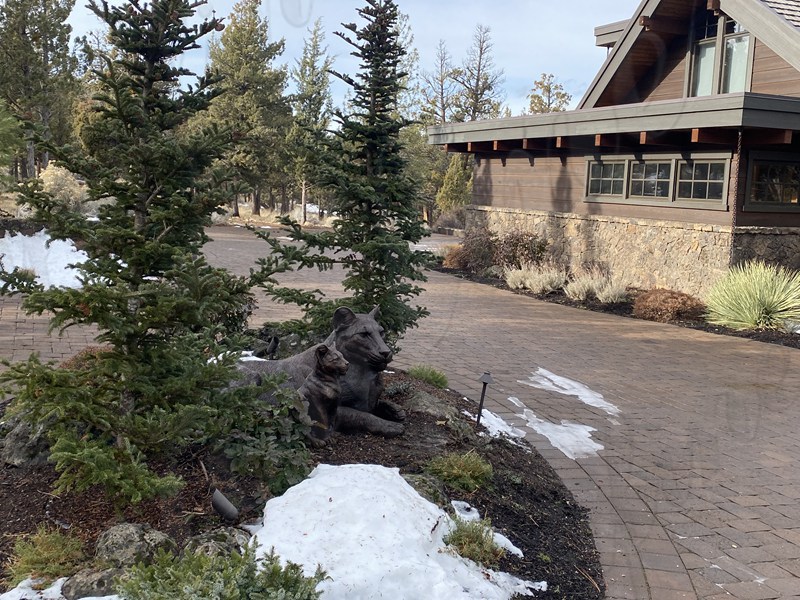
3.Living Room or Hallway (Symbolizes Power and Elegance)
In the home, bronze lion statues enhance the space with an aura of authority, strength, and timeless elegance. Its rich, warm tones can complement a variety of styles from classical to modern.
Using bronze in an interior setting can elevate the decor and make it feel more sophisticated. A lion in a living room or hall can create a stunning focal point that draws attention to the room’s design.
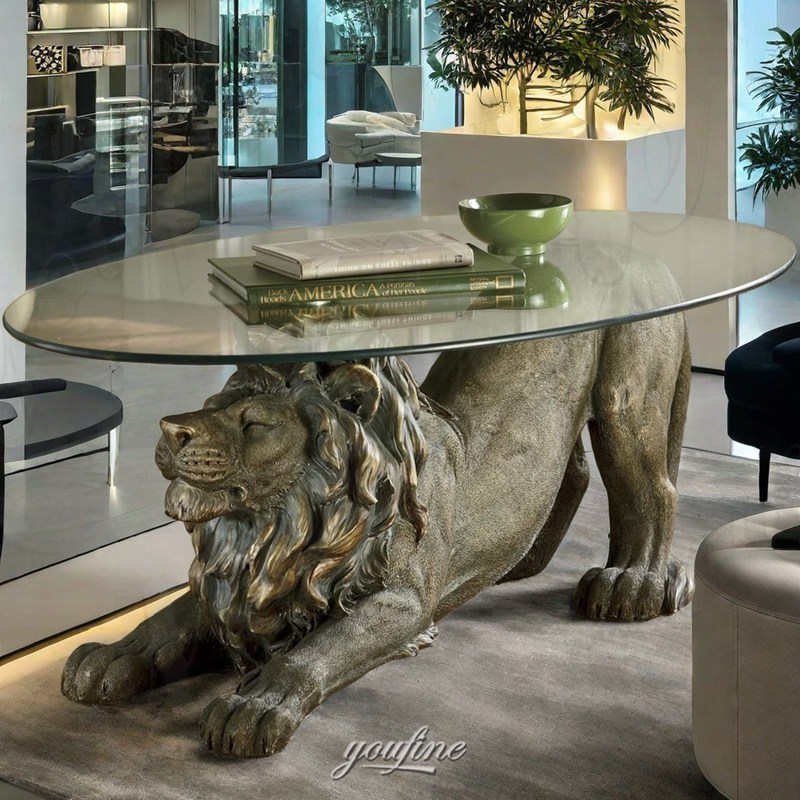
4.In the Office and Workplace (Symbolizes Leadership and Success)
A lion statue in the office symbolizes power, success, and business acumen. It is often used in professional fields to enhance a sense of confidence and dominance in decision-making.
In some cultures, lions are believed to attract wealth and good fortune. Therefore, placing a bronze lion in the workplace can be seen as a way to invite professional success and career advancement.
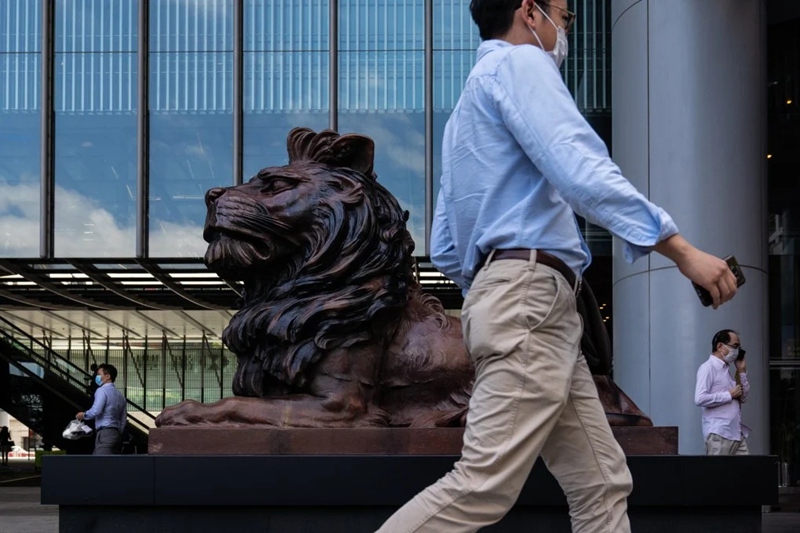
5.In front of a Statue or Monument (symbolizing honor and remembrance)
Bronze lions placed in front of a statue or monument enhance the solemnity and significance of the space. Their powerful presence emphasizes the importance of the monument and the honor it represents.
Lions are often used to commemorate military leaders, politicians, and figures who embody strength, courage, and leadership. The bronze material provides a lasting tribute to the legacy they left behind.
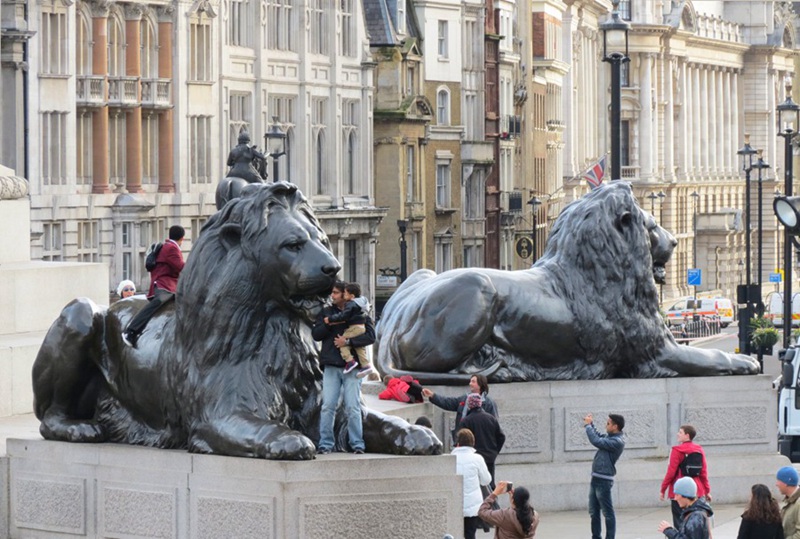
6.Luxury Hotels or Commercial Spaces (Symbolizes Affluence and Status)
Large bronze lion statues in commercial settings convey a sense of wealth, sophistication, and exclusivity. It elevates the status of the space and boldly states the class and quality of the place.
They can attract visitors’ attention and add a visual focal point to large open areas. Whether in a hotel, gallery, or museum, lions symbolize high status and the premium experience provided to clients, guests, and patrons.

YouFine Animal Sculpture Foundry
Finally, are you ready to add a pair of bronze lion sculptures to your space? Here, I am honored to recommend YouFine Foundry to you.
As a professional factory with 40 years of casting experience, we use advanced lost wax casting method. Every step is controlled by professional artists.
The quality is long-lasting and the details are exquisite, only to provide customers with a perfect shopping experience. Please feel free to contact YouFine for more exquisite designs!

